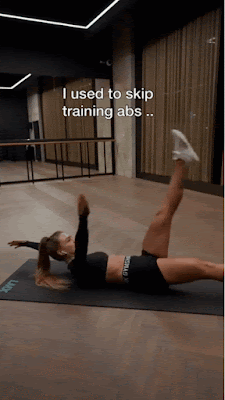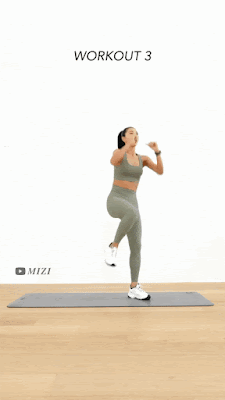The Ultimate Fat-Burning Treadmill Interval Workout: A Comprehensive Guide
A treadmill interval workout is an excellent way to boost cardiovascular fitness, burn calories, and improve endurance. Interval training alternates between high-intensity bursts and lower-intensity recovery periods, making it more effective and time-efficient than steady-state cardio. Here's a beginner-friendly Treadmill Interval Workout plan:
Benefits of Treadmill Interval Workouts
- Burns More Calories: High-intensity intervals increase calorie burn during and after the workout (thanks to the afterburn effect, or EPOC).
- Improves Cardiovascular Fitness: Alternating intensities challenges your heart and lungs.
- Saves Time: Shorter workouts with intervals can be more effective than longer, steady-state sessions.
- Boosts Metabolism: Helps improve fat burning and metabolic rate.
- Prevents Boredom: The changing pace keeps the workout engaging.
Treadmill Interval Workout Plan (Beginner-Friendly)
Warm-Up (5 Minutes)
- Start with a brisk walk or light jog to prepare your body.
- Speed: 3.0–4.0 mph
- Incline: 1–2%
- Focus on loosening up your muscles and gradually increasing your heart rate.
Interval Workout (20–25 Minutes)
Alternate between high-intensity and recovery intervals. Adjust speeds and inclines based on your fitness level.IntervalDurationSpeedInclineEffort Level High-Intensity Run 1 minute 5.5–7.0 mph 1–2% Hard effort (7–8/10) Recovery Walk/Jog 2 minutes 3.0–4.0 mph 1% Easy effort (3–4/10) High-Intensity Run 1 minute 5.5–7.0 mph 1–2% Hard effort (7–8/10) Recovery Walk/Jog 2 minutes 3.0–4.0 mph 1% Easy effort (3–4/10) Repeat for 5–6 rounds (20–25 minutes total).
Cool-Down (5 Minutes)
- Gradually reduce your speed and incline to bring your heart rate down.
- Speed: 2.5–3.5 mph
- Incline: 0%
- Finish with light stretching to improve flexibility and prevent soreness.
Tips for Success
- Adjust Speeds: Customize the speeds based on your fitness level. Beginners can start with power walks instead of runs.
- Use Incline: Adding a slight incline (1–2%) mimics outdoor running and increases intensity.
- Stay Hydrated: Keep water nearby to stay hydrated during the workout.
- Focus on Form: Maintain good posture—keep your head up, shoulders relaxed, and core engaged.
- Listen to Your Body: If you feel overly fatigued, reduce the intensity or take longer recovery breaks.
Advanced Variations
If you're more experienced, try these modifications:
- Increase Speed: Push your high-intensity intervals to 7.5–9.0 mph.
- Add Incline: Increase the incline to 3–5% during high-intensity intervals.
- Shorten Recovery: Reduce recovery time to 1 minute instead of 2.
- Pyramid Intervals: Gradually increase and then decrease the duration of high-intensity intervals (e.g., 30 sec, 45 sec, 60 sec, 45 sec, 30 sec).
Sample Advanced Treadmill Interval Workout
IntervalDurationSpeedInclineEffort Level High-Intensity Run 30 seconds 8.0–9.0 mph 3% Max effort (9/10) Recovery Walk/Jog 1 minute 3.0–4.0 mph 1% Easy effort (3–4/10) High-Intensity Run 45 seconds 8.0–9.0 mph 4% Max effort (9/10) Recovery Walk/Jog 1 minute 3.0–4.0 mph 1% Easy effort (3–4/10) High-Intensity Run 60 seconds 8.0–9.0 mph 5% Max effort (9/10) Recovery Walk/Jog 1 minute 3.0–4.0 mph 1% Easy effort (3–4/10) Repeat for 4–5 rounds.
Conclusion
Treadmill interval workouts are a powerful way to improve fitness, burn calories, and break through plateaus. Whether you're a beginner or advanced, this workout can be tailored to your fitness level. Start slow, stay consistent, and enjoy the benefits of interval training!







.gif)









